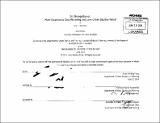| dc.contributor.advisor | Dennis Frenchman. | en_US |
| dc.contributor.author | Press, Jared Harding | en_US |
| dc.contributor.other | Massachusetts Institute of Technology. Department of Urban Studies and Planning. | en_US |
| dc.coverage.spatial | n-us-il n-us-dc | en_US |
| dc.date.accessioned | 2013-10-24T17:38:56Z | |
| dc.date.available | 2013-10-24T17:38:56Z | |
| dc.date.copyright | 2013 | en_US |
| dc.date.issued | 2013 | en_US |
| dc.identifier.uri | http://hdl.handle.net/1721.1/81646 | |
| dc.description | Thesis (M.C.P.)--Massachusetts Institute of Technology, Dept. of Urban Studies and Planning, 2013. | en_US |
| dc.description | Pages 117-118 blank. Cataloged from PDF version of thesis. | en_US |
| dc.description | Includes bibliographical references (p. 108-116). | en_US |
| dc.description.abstract | Over the past decade, Big Box retailers have been trying to tap into urban markets after years of explicitly avoiding them in favor of suburban environments. In the past few years, retailers have begun experimenting with new store models and layouts to better integrate into these urban environments. Research was based on site observations and analysis of five case studies, consisting of Target and Walmart stores built since 2008 in Chicago and Washington, D.C. An examination of the range of these new urban Big Box typologies was conducted to assess the current state of this phenomenon and attempt to understand and project its impacts on cities. This study found that this trend of urban Big Box retail marks a paradigm shift, suggesting that general merchandise Big Box retailers such as Target and Walmart can and will likely become legitimate urban elements by adapting their form (through mixed-use development) and function (increasing emphasis on daily living essentials, fresh groceries in particular). | en_US |
| dc.description.statementofresponsibility | by Jared Harding Press. | en_US |
| dc.format.extent | p. | en_US |
| dc.language.iso | eng | en_US |
| dc.publisher | Massachusetts Institute of Technology | en_US |
| dc.rights | M.I.T. theses are protected by
copyright. They may be viewed from this source for any purpose, but
reproduction or distribution in any format is prohibited without written
permission. See provided URL for inquiries about permission. | en_US |
| dc.rights.uri | http://dspace.mit.edu/handle/1721.1/7582 | en_US |
| dc.subject | Urban Studies and Planning. | en_US |
| dc.title | Dr. StrangeBox or : how I learned to stop worrying and love urban big box retail | en_US |
| dc.title.alternative | How I learned to stop worrying and love urban big box retail | en_US |
| dc.title.alternative | Doctor Strange Box or : how I learned to stop worrying and love urban big box retail | en_US |
| dc.type | Thesis | en_US |
| dc.description.degree | M.C.P. | en_US |
| dc.contributor.department | Massachusetts Institute of Technology. Department of Urban Studies and Planning | |
| dc.identifier.oclc | 859598536 | en_US |
